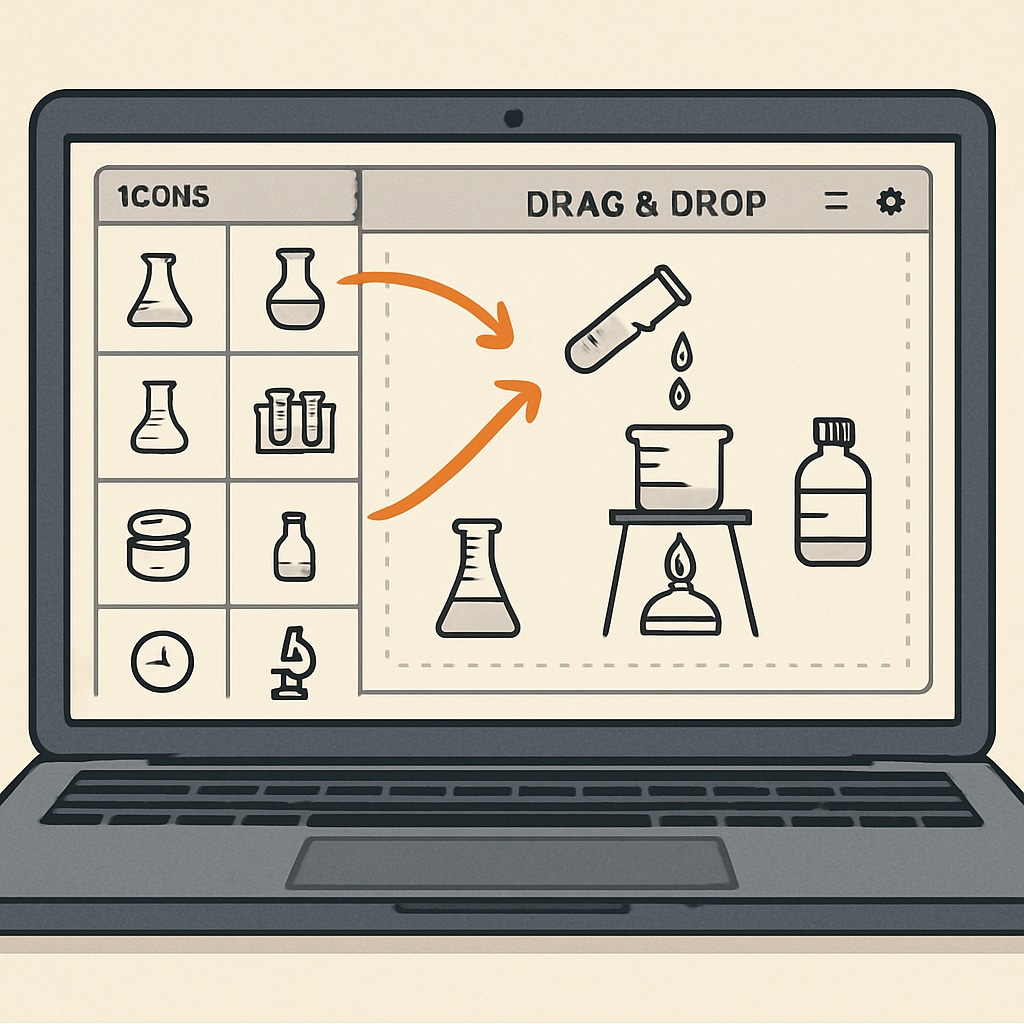In the realm of K12 science education, creating clear and accurate experiment diagrams is essential for fostering student understanding and engagement. With the increasing demand for digital solutions in education, many tools now enable teachers to craft professional and intuitive experiment diagrams effortlessly. This article delves into the significance of these tools and provides recommendations for the best software and platforms available.
Why Digital Tools Matter for Experiment Diagram Creation
Experiment diagrams play a pivotal role in explaining scientific concepts. They help visualize complex processes, making abstract ideas more tangible for students. However, traditional hand-drawn diagrams can be time-consuming and inconsistent. This is where digital tools shine. They allow educators to produce standardized, editable, and visually appealing diagrams that can be easily shared across digital platforms.
Moreover, digital tools often come with templates, icons, and drag-and-drop features, simplifying the design process. As a result, teachers save time while enhancing the quality of their instructional materials.

Top Digital Tools for Experiment Diagram Creation
Below is a curated list of digital tools ideal for creating experiment diagrams in K12 science education:
- Lucidchart: Known for its user-friendly interface, Lucidchart provides a vast library of templates and icons specifically tailored for science education. It is a cloud-based platform, making collaboration with colleagues seamless.
- EdrawMax: This versatile tool offers diagramming solutions across various subjects, including science. Its pre-designed templates for lab setups and physics experiments are particularly useful.
- BioRender: Perfect for biology teachers, BioRender specializes in creating professional-quality diagrams of biological processes and lab experiments. Its extensive library of scientific icons ensures precision.
- Canva: While Canva is primarily a graphic design tool, its customizability and ease of use make it a great option for creating simple experiment diagrams.
- SmartDraw: Designed for educators, SmartDraw offers diagram templates for chemistry, physics, and biology labs, along with intuitive drag-and-drop functionality.
Each of these tools caters to different needs, from simple drag-and-drop functionality to advanced customization options. Selecting the right tool depends on the subject matter and the complexity of the diagram.
Tips for Using Digital Tools Effectively
To maximize the benefits of digital tools, consider the following tips:
- Start with Templates: Many tools offer pre-designed templates for common experiments. Using these can save time and ensure accuracy.
- Leverage Tutorials: Most platforms provide tutorials or guides. Familiarize yourself with these resources to unlock the full potential of the tool.
- Focus on Clarity: While aesthetics are important, the primary goal of an experiment diagram is to convey information clearly. Avoid overloading the diagram with unnecessary elements.
- Encourage Student Interaction: Some tools allow students to create their own diagrams. This can be a great way to enhance their learning experience and critical thinking skills.
By following these tips, educators can create diagrams that not only look professional but also serve as effective teaching aids.

The Future of Experiment Diagram Tools in K12 Education
As technology continues to evolve, the integration of digital tools in education will only become more prevalent. Experiment diagram tools are already incorporating features like real-time collaboration, 3D visualization, and even augmented reality (AR). These advancements promise to make science education more interactive and engaging than ever before.
In conclusion, adopting digital tools for experiment diagram creation is a step toward modernizing K12 science education. By leveraging the right platforms, teachers can save time, improve the quality of their instruction, and inspire a deeper love for science in their students.
Explore the tools mentioned above and transform your science lessons today!


